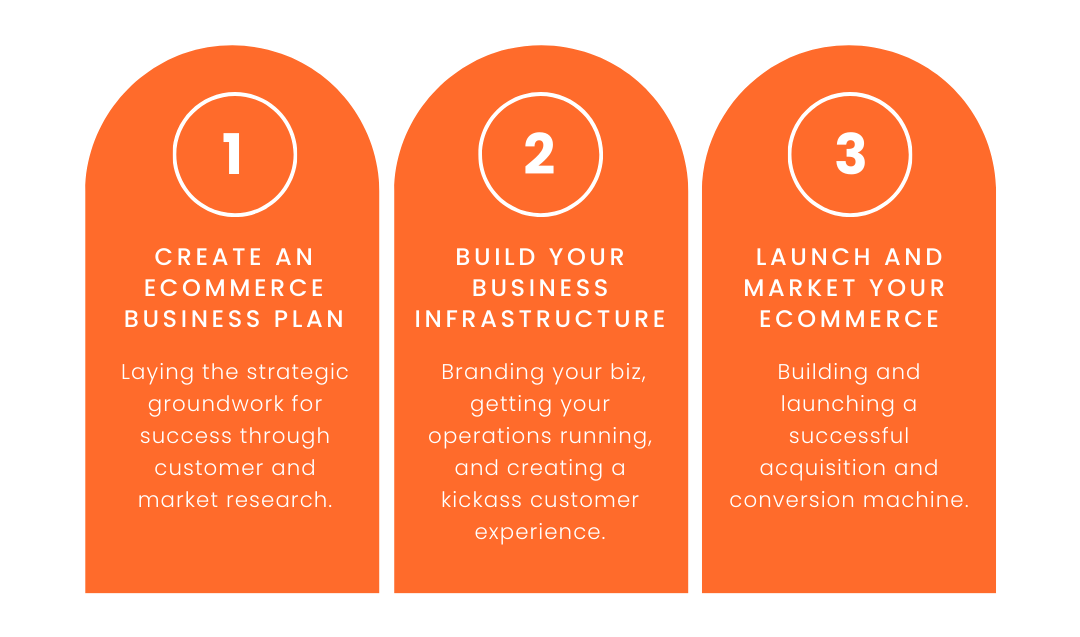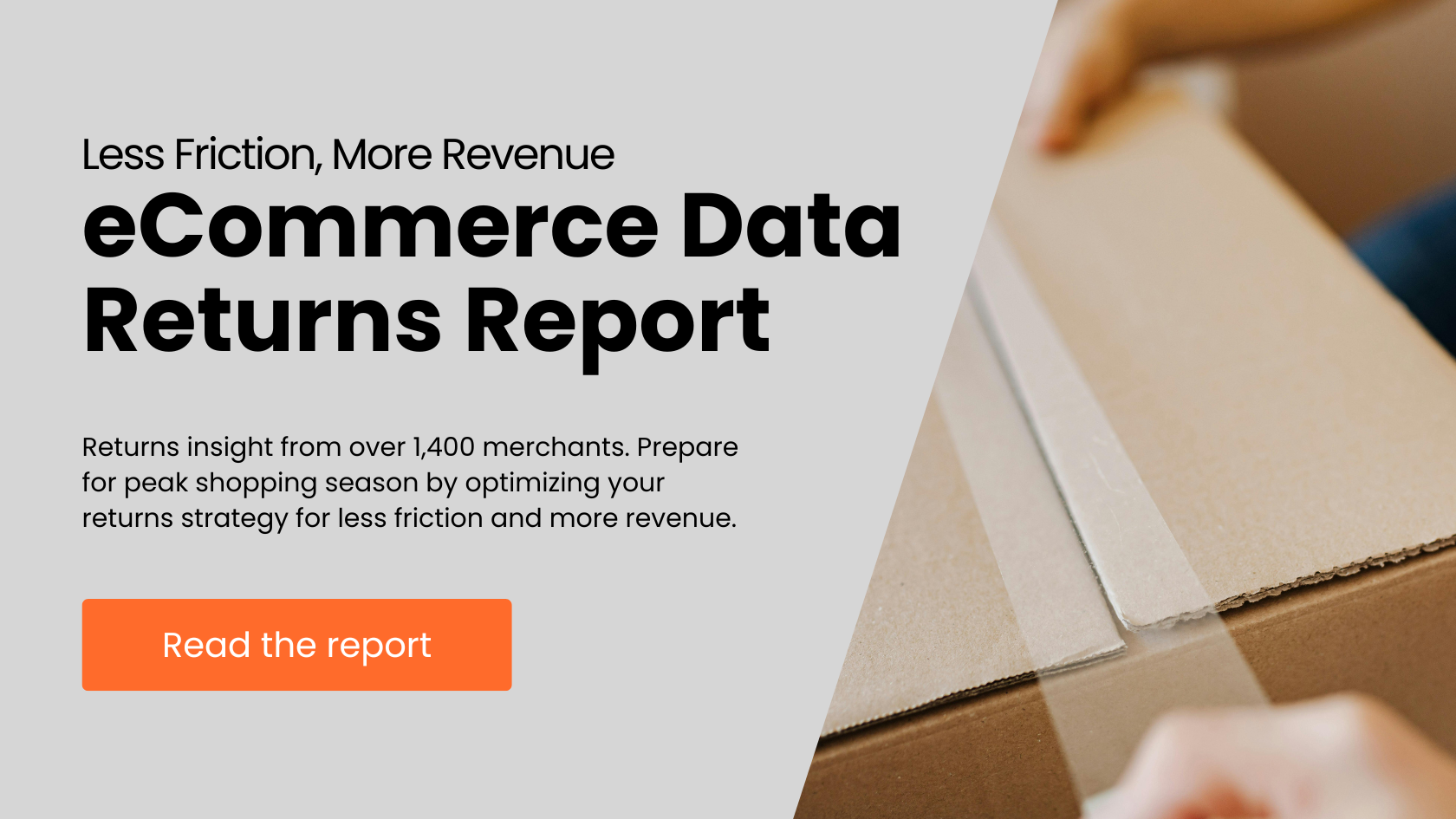How to Start an eCommerce Business: A 3-Phase Beginner’s Guide

Thinking about starting an online business? 🤔
Maybe you’ve got a great idea but don’t know the first thing about eCommerce. Or maybe you know a thing or two, but you can’t pinpoint why some entrepreneurs succeed while others fail.
Well, here’s the scoop: Success comes down to thoughtful, strategic planning and knowing how and when to seize the opportunities that come your way. From setting up sleek direct-to-consumer (DTC) storefronts to building booming online businesses, entrepreneurs of all kinds can use thoughtful, strategic planning to find their niche and fulfill a market need.
The opportunities are virtually limitless. The global eCommerce market is set to surpass a staggering $3 trillion in 2024 and grow at a robust 9.45% rate for years to come [CAGR 2024-2029].
And even better? The barriers to entry are at an all-time low.
Entrepreneurs can confidently navigate the journey from concept to launch with the wealth of detailed resources, expert insights, and cutting-edge software and tools available to help them.
But figuring out where to start can be overwhelming.
If you’re feeling this pain, this three-phase beginner's guide offers strategic secrets for starting an eCommerce business.

Phase 1: Create an eCommerce business plan
Phase 1 is all about laying the strategic groundwork for success. Let's dive into the essential steps for starting your online store.
Nail your niche
First things first: hone in on your product niche. What sets your products apart from other options?
To figure this out, conduct thorough market research—this will help you uncover industry statistics, trends, customer demand, and potential gaps in the existing solutions that meet your ideal customer’s needs. Analyze your competitor’s offerings to find areas where you can differentiate your brand and products to gain a competitive edge.
Need some inspiration? Check out these top online store websites for valuable insights.
Get to know your target audience
Next up, get to know your audience inside and out. Who are they, and what drives their purchasing decisions?
Develop detailed customer personas to understand their needs, preferences, and pain points—not just demographic information. Understanding your target customers' motivations is key to crafting a compelling value proposition and tailoring your offerings to meet their expectations.
Figure out your supply chain and logistics
With your product and audience in mind, it's time to nail down your supply chain and logistics.
First, research and vet potential suppliers to ensure they offer quality, reliability, and cost-effectiveness. Next, negotiate terms and establish partnerships that align with your business goals.
Then, decide how you'll handle storage, fulfillment, and shipping, weighing the pros and cons of in-house versus third-party logistics (3PL). Remember to develop a shipping strategy to optimize costs and delivery times and offer a seamless experience for your customers.

Plan to set up your business operations
Now, let's get down to brass tacks: your business operations.
First, create a comprehensive business plan outlining your mission, vision, and goals. Then, define your marketing, sales, and financial strategies to drive growth and profitability.
Next, create a budget and resource model, estimating startup costs, ongoing expenses, and revenue projections. Allocate resources wisely, considering marketing initiatives, inventory management, and overhead expenses. Finally, set specific, measurable, achievable, relevant, and time-bound (SMART) goals to track your progress and adjust your strategies as you go.
Remember the legalities, too! Choose the proper legal structure for your business (e.g., sole proprietorship, LLC, corporation, etc.), and keep your company compliant by registering with relevant authorities and obtaining necessary licenses and permits.
Remember, while you can learn a lot online, it’s always best to seek legal counsel and get advice tailored to your needs and market.
Phase 2: Build your eCommerce business infrastructure
Phase 2 marks the pivotal stage where you put your plans into action. Let's explore the crucial steps to construct your eCommerce business.
Brand your business
Your brand identity—the unique elements that shape how your customers perceive your brand—is the cornerstone of your eCommerce business.
Start by choosing a brand identity that resonates with your target audience and reflects your unique value proposition. Next, develop a brand personality, voice, and visual identity—including your logo, color palette, and typography—to create a cohesive brand image. Then, craft brand guidelines to ensure consistency across all brand touchpoints, which helps build trust and brand recognition among your audience.
Need help brainstorming brand and product names? Check out AfterShip’s free online tools for inspiration.
Choose your eCommerce platform and create your website
Picking the right eCommerce platform is vital to your business's success. Evaluate popular platforms like Shopify, BigCommerce, WooCommerce, and Magento based on features, pricing, scalability, and customization options.
When deciding, consider your specific needs, including inventory management, payment gateways, and design flexibility.
Once you've chosen your platform, customize your website design and layout to align with your brand's identity. Configure essential eCommerce functionalities like product listings, shopping carts, and checkout processes to create a seamless online shopping experience for your customers.
Design a seamless pre- and post-purchase customer experience
Your website is only as good as the user experience you create. Optimize your website navigation and user interface to make it easy for visitors to browse your site and shop for your products.
Provide detailed product descriptions, high-quality images, and customer reviews to help make purchase decisions a breeze. Implementing a smooth checkout process with multiple payment options and secure transaction processing gives customers peace of mind.
Additionally, offer post-purchase support and communication, including order tracking, customer service, and returns/exchanges, to foster long-term loyalty.
Learn how proactive shipment tracking delights your customers, reduces WISMO tickets, and optimizes delivery performance.
Phase 3: Launch and market your eCommerce business ideas
Phase 3 marks the exciting stage where you let the world experience your eCommerce business. Let's dive into the essential steps for launching and marketing your online store.
Craft your marketing strategy
Your marketing strategy is the roadmap that guides your efforts to attract and engage customers, so choose your marketing channels wisely—identify those that resonate most with your target audience.
Consider using a mix of channels, like SEO, social media, email marketing, PPC advertising, and affiliate marketing, to reach your ideal customers at different stages of their buying journey.
Develop an omnichannel marketing strategy that integrates seamlessly with your overall business objectives and uses consistent messaging and brand voice across all touchpoints.

Create your customer acquisition and retention strategies
Acquiring new customers is essential for growth, but retaining existing ones is equally important for long-term success. Try these tips:
- Use SEO best practices to improve visibility and drive organic traffic to your website.
- Engage with your audience on social media platforms through content marketing, community building, and influencer partnerships to foster meaningful connections and brand advocacy.
- Create targeted email campaigns to nurture prospective customers and encourage repeat purchases. (Pro tip: Use segmentation and personalization strategies to deliver relevant content to your audience.)
- Use PPC advertising to drive targeted traffic and conversions for specific products or promotions to maximize your ROI and drive business growth.
Practical tips for a successful launch
Launching your eCommerce business is a big deal—it takes careful planning and execution to do it successfully.
Create a launch timeline and promotional activities to generate buzz and excitement around your brand and products. Then, monitor and analyze key performance metrics like website traffic, conversion rates, and sales to evaluate the effectiveness of your marketing efforts and optimize your strategies accordingly.
Ensure you continuously iterate and improve your marketing initiatives based on data-driven insights—stay agile and responsive to market trends and customer feedback.
How to start an eCommerce business in 3 phases
Let's quickly review the key phases of starting an eCommerce business.
Phase 1: Define your product niche, understand your target audience, establish your supply chain, and craft a solid business plan to lay the groundwork for success.
Phase 2: Build a strong foundation for your online store by branding your business, choosing the right eCommerce platform, and designing a seamless customer experience.
Phase 3: Launch your online store with a comprehensive marketing strategy focusing on customer acquisition, retention, and creating a great customer experience.
Armed with these insights and strategies, you can confidently begin to go from concept to launch. Keep learning, adapting, and striving for excellence as you build and grow your eCommerce empire.
Elevate your eCommerce game with expert tips, data insights, and inspiration from the best in the business—all delivered right to your inbox.


